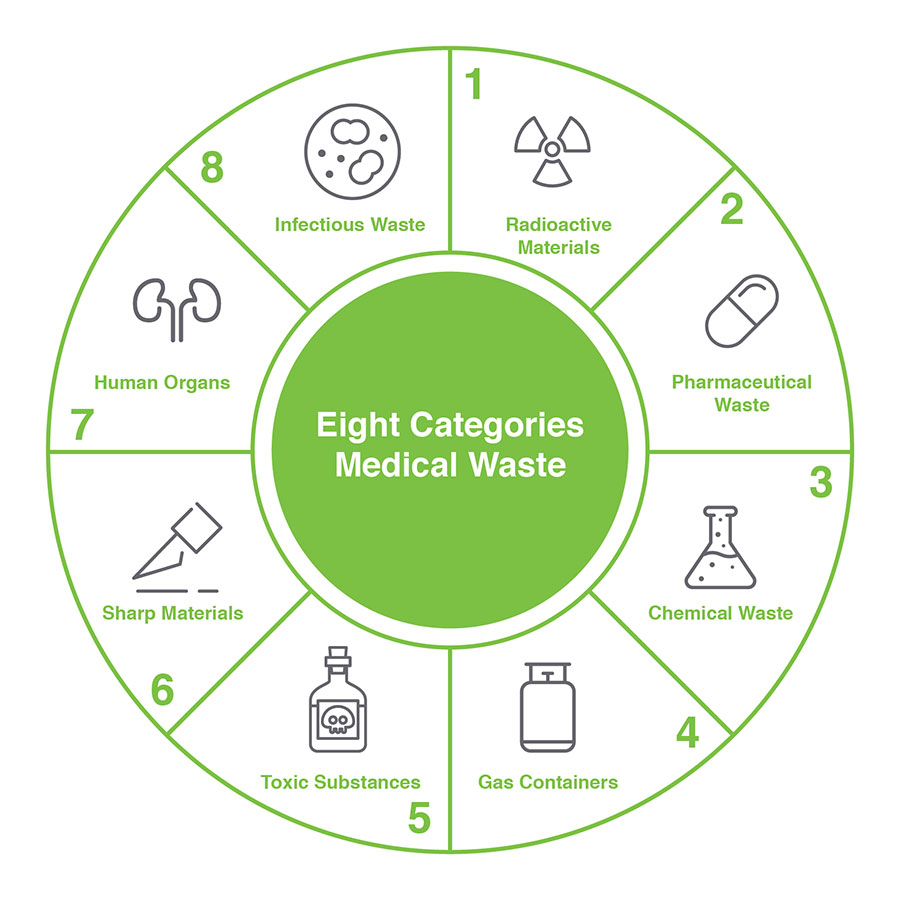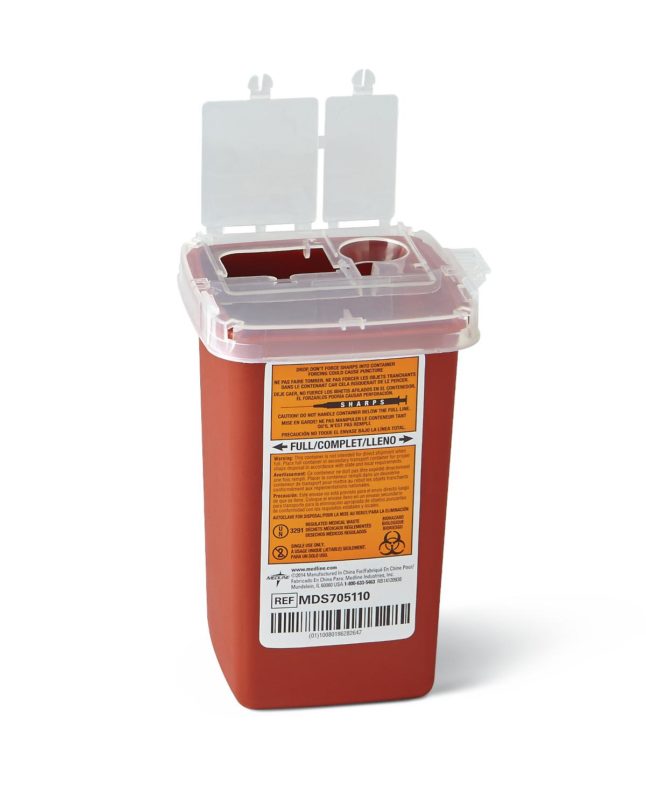Your Trusted Partner: Medical Waste Removal Services Tailored to Your Needs
Stay Ahead of Laws: Specialist Recommendations on Medical Waste Disposal
In a world where the healthcare market is continuously progressing, it is crucial for medical facilities to stay ahead of laws when it comes to the appropriate disposal of medical waste. From understanding the various categories of clinical waste to carrying out the best collection and segregation techniques, this discussion will give useful insights and workable suggestions to aid facilities remain in advance of guidelines in the ever-changing landscape of medical waste disposal.
Recognizing Medical Waste Categories
Recognizing medical waste groups is crucial for appropriate disposal and monitoring in health care centers. Medical waste refers to any kind of waste generated by health care tasks that may posture a hazard to public health and wellness or the setting. It is critical to classify clinical waste precisely to guarantee its safe handling, disposal, therapy, and transport.
There are several classifications of clinical waste that medical care centers need to be accustomed to. The most typical groups consist of contagious waste, pathological waste, sharps waste, pharmaceutical waste, and chemical waste. Each group has specific guidelines and guidelines for its correct administration and disposal.
Infectious waste includes materials polluted with blood or various other physical fluids, such as gloves, dress, and research laboratory societies. Pathological waste describes human tissues, organs, or body parts that require special delivery and disposal. Sharps waste includes utilized needles, syringes, and various other sharp items that can trigger injury and transfer infections. Drug waste consists of run out, unused, or polluted medications that need cautious handling and disposal. Chemical waste consists of solvents, anti-bacterials, and various other chemical compounds utilized in health care facilities.
Remaining Up-To-Date With Regulatory Adjustments
Remaining current with regulatory changes is crucial for medical care facilities to guarantee conformity and appropriate administration of clinical garbage disposal. medical waste removal service. With policies continuously evolving, it is essential for healthcare centers to remain current to prevent penalties, penalties, and potential harm to the setting and public health and wellness
To stay in advance of regulative modifications, healthcare centers ought to establish a system for surveillance and tracking updates. This can be done by subscribing to governing newsletters, attending meetings and workshops, and actively joining market associations. Furthermore, facilities must designate an employee or group in charge of staying notified and distributing information to appropriate stakeholders.
Regular communication with governing companies is also vital. Healthcare centers should establish partnerships with local, state, and government firms to ensure they understand any modifications in regulations that might influence their waste management methods. This can be done via regular meetings, involvement in public remark periods, and positive involvement with regulatory companies.
Additionally, medical care centers must think about partnering with waste management business that specialize in clinical garbage disposal (medical waste disposal services with WasteX). These business are typically skilled in the most recent policies and can offer support and assistance to make sure conformity
Implementing Proper Collection and Segregation Techniques
To successfully handle clinical waste disposal, healthcare facilities should establish correct collection and partition approaches based on regulatory guidelines. Implementing these methods makes certain the safe handling and disposal of potentially hazardous products, shields the setting, and decreases the risk of injuries and infections to healthcare employees and the public.
Correct collection and partition methods involve the use of marked containers and classifying systems. Medical care centers should provide plainly classified containers for various sorts of medical waste, such as sharps, contagious waste, pharmaceutical waste, and non-hazardous waste. These containers need to be color-coded and plainly marked to stay clear of complication and promote very easy recognition.
In addition, health care facilities need to educate their personnel on the proper treatments for gathering and segregating clinical waste. This includes educating them on the different types of waste, the ideal containers to utilize, and the significance of following standards and laws. Normal training sessions and correspondence course need to be conducted to ensure that personnel members continue to be updated on ideal methods.
Moreover, healthcare centers should develop a system for regular collection and disposal of clinical waste. This may include partnering with certified waste monitoring companies that concentrate on medical garbage disposal. These firms will make sure that the collected waste is delivered and thrown away in compliance with regulative needs.
Choosing the Right Disposal Approaches

Incineration is one of the most effective and common techniques for taking care of certain sorts of medical waste, such as pathological waste and sharps. It involves the controlled burning of waste at high temperature levels, minimizing it to ash. Incineration can release dangerous contaminants into the air and contribute to air pollution.

Other disposal approaches include chemical therapy, microwave therapy, and landfilling. Chemical therapy involves using chemicals to neutralize the waste and decontaminate. Microwave treatment makes use of microwave energy to heat and sanitize the waste. Landfilling involves hiding the waste in a designated land fill area (medical waste disposal services with WasteX). Nevertheless, landfilling needs to be the last resort because of the possible threat of contamination to soil and groundwater.
Ensuring Compliance Via Documents and Training
After carefully considering the appropriate disposal methods for clinical waste, healthcare facilities should guarantee compliance with policies and reduce environmental impact by carrying out effective documentation and training treatments. This action is critical in keeping a secure and sustainable atmosphere for both health care workers and the general public.

Training is equally crucial in making certain compliance with policies. Medical care employees who deal with clinical waste needs to receive suitable training on waste look at more info segregation, taking care of, and disposal procedures. This training needs to cover subjects such as the proper use personal safety tools, recognition of various kinds of waste, and the correct disposal methods for each and every waste category. By providing extensive training, medical care facilities can empower their staff to make informed decisions and lessen the risk of incorrect waste disposal.
Verdict
To conclude, staying in advance of laws in clinical garbage disposal is vital for health care facilities. medical waste removal services. Comprehending the different categories of clinical waste, remaining updated with regulatory changes, implementing proper collection and partition approaches, selecting the suitable disposal methods, and making certain compliance with paperwork and training are all important steps. By adhering to these guidelines, healthcare view publisher site companies can efficiently manage and get rid of of clinical waste in a accountable and safe fashion
From comprehending the different groups of medical waste to applying the ideal collection and segregation methods, this discussion will certainly provide workable suggestions and useful understandings to help centers stay ahead of laws in the ever-changing landscape of clinical waste disposal. - medical waste disposal services with WasteX
The most typical groups consist of infectious waste, pathological waste, sharps waste, pharmaceutical waste, and chemical waste. Healthcare facilities must give clearly labeled containers for different types of medical waste, such as sharps, contagious waste, pharmaceutical waste, and non-hazardous waste. Health care facilities should develop a thorough system to record and track all aspects of medical waste disposal, including kinds of waste created, amounts, and disposal methods made use of. Medical care employees that manage clinical waste must obtain proper training on waste partition, managing, and disposal procedures.